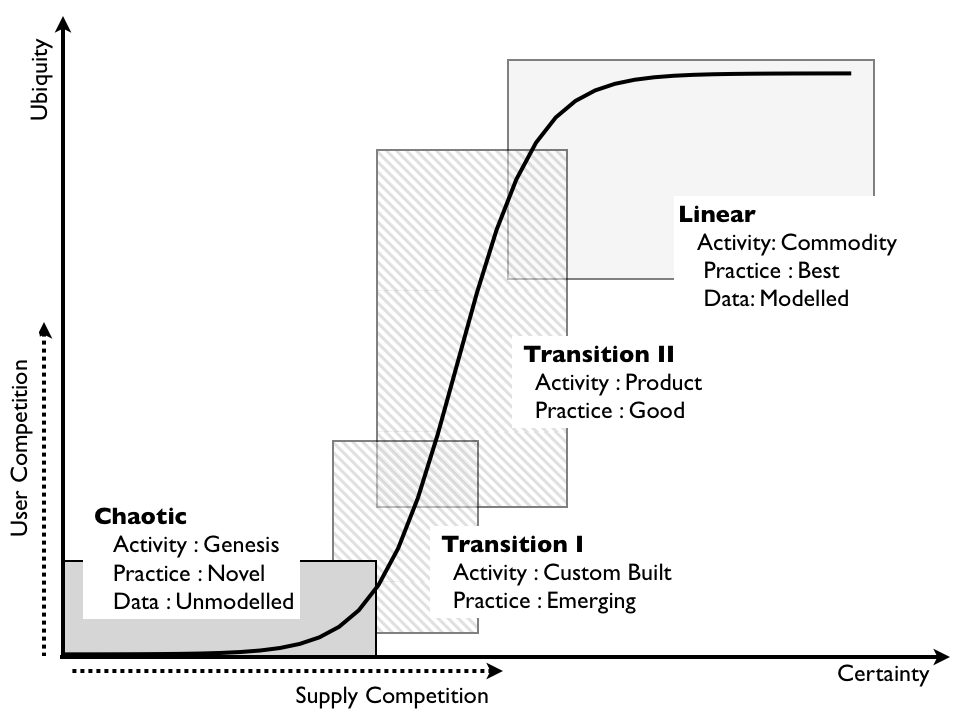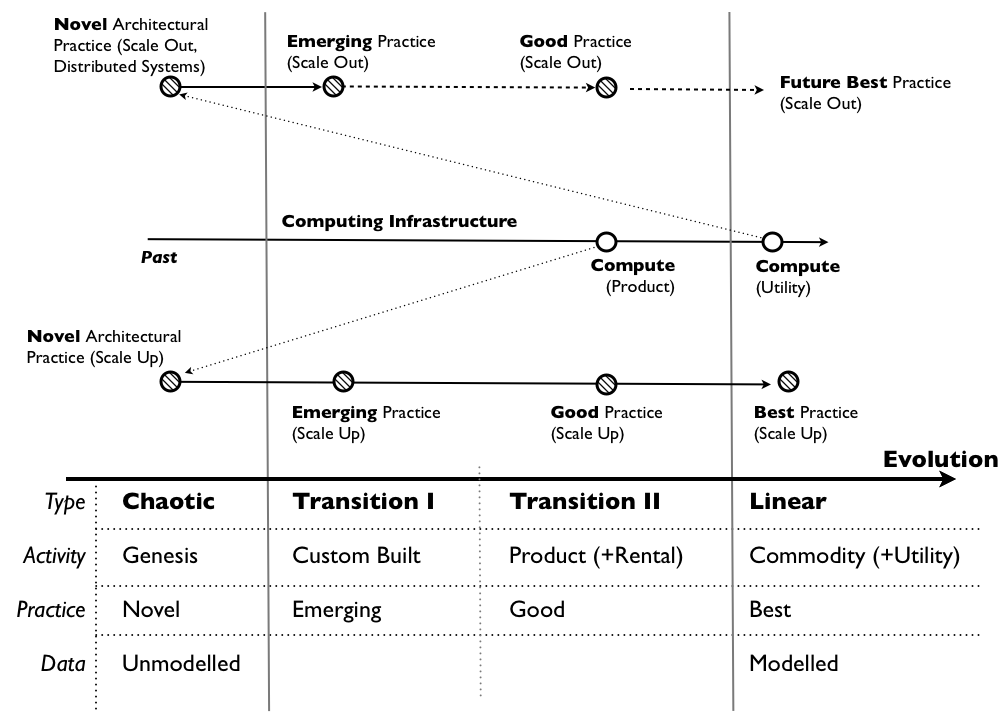Everything evolves
Every activity, practice, data type, etc. starts in the Genesis stage, and either evolves toward the Commodity stage, or dies along the way. Things evolve through vendors competing to improve the product (supply side evolution) and through the market adapting to take better advantage of the thing (demand side evolution).
From chapter 2 in the book:
In any industrial ecosystem, novel and new things constantly appear as a consequence of the desire for companies and individuals to gain an advantage over others. Those things that are useful will be copied. They will spread until the once novel and new becomes commonplace. Yesterday’s wonders are destined to become today’s discounted special offers. The magic of the first electric light bulb, the first computer and the first telephone are now an expected norm. We no longer marvel at such things but instead we would reel in utter shock if presented with a workplace that did not provide them. Competition and the desire to gain an advantage not only creates change, it spreads it and forces companies to adopt it.[1]
Over time, suppliers compete to make the product better, faster, cheaper, more reliable, better fit for purpose, etc. Over that same period, users of the product understand the product better, and learn how to use it more effectively in their lives or businesses. They buy it in greater and greater volumes, expect it at lower and lower prices, and expect greater and greater reliability. Users build expertise, procedures, assumptions, and systems around this product.
When users build processes, systems, procedures, etc. around a version of a product, this is called the “practice” around usage of that product. This practice also evolves to get better over time. This is called “Co-evolution of practice”. Sometimes a change occurs in the underlying product that allows or requires a change in the practice, so that a new practice forms and evolves. When this happens, the industry show some internal religious wars over the correct practice, with adherents of the old practice pointing to the maturity as evidence of superiority. The old practice is, in fact, “better” by the metrics of reliability, familiarity, and number of trained practitioners. However, it is no longer a good fit for the new product, and the new practice, although less mature, and therefore somewhat less reliable, less familiar, and less popular, is the next wave of growth & the path to success. Until the next evolution of the product, of course.
Further Reading
Wardley's 2013 blog post: Everything Evolves

